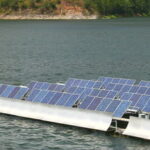India Solar Manufacturers Finally Find The Holy Grail
February 14, 2019
Google To Install Its First Floating Solar Project in Asia
February 18, 2019We keep hearing stories about how solar and wind energy are going to change the face of the power industry in India and worldwide. India has been quite vocal about its solar ambition, with the country aiming at installing 100 GW of solar capacities by 2022. According to a new report by Bridge to India, the country is set to march aggressively towards its solar target with expected installations of 14 GW in 2019.
If achieved, India will reach a total installed solar capacity of about 38 GW by the end of the year. Large scale clean energy projects are expected to drive 16 GW of clean energy capacity in 2019. Out of this projected number, large scale solar projects would account for nearly 11 GW and wind energy projects will be ~2.3 GW. To achieve this target, central and state governments have been auctioning tenders to build large-scale solar projects.
Last year was mired in various issues like low tender activity, doubts around GST and imposition of safeguard duties. With MNRE announcing plans to issue tenders for 60 GW by March 2020, the momentum is gradually returning.
India is slowly accepting rooftop solar installations, mainly in the commercial and industrial space given their high conventional power tariffs. Not only rooftop but floating solar installations are also gathering pace. New floating solar tenders worth 5 GW are expected to be floated by the government in 2019.
According to TERI, the cost of solar power generation in India is also set to fall to as low as Rs 1.9 per unit through 2030. Technology advancements will lead to lower the cost of wind and solar, which is projected to be between Rs 2.3-2.6 per kWh and Rs 1.9-2.3 per kWh, respectively. The cost of storage is also expected to decline by nearly 70%, which should boost the rate of solar adoption in the country and support the grid by taking off some load. The share of renewables including wind and solar will reach 30% of total generation by 2030.

